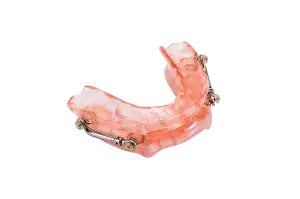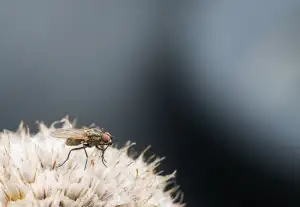DIY Fruit Fly Trap: Your Ultimate Guide to Banishing Pesky Pests at Home

Fruit flies, those tiny, pesky insects that seem to appear out of nowhere, can quickly become a nuisance in your home. These small creatures are attracted to ripe and decaying fruits, vegetables, and other organic matter. They can multiply rapidly, laying hundreds of eggs at a time. Before you know it, your kitchen becomes a breeding ground for these unwanted guests. But fear not! With the right knowledge and tools, you can easily banish fruit flies from your home and enjoy a pest-free environment once again. In this guide, we will walk you through the process of creating your very own DIY fruit fly trap that is both effective and affordable. Say goodbye to fruit fly infestations and hello to a clean and fresh living space!
Understanding the Need for a Fruit Fly Trap
Fruit flies are not only annoying, but they can also be a health hazard. These tiny pests are attracted to ripening fruits and vegetables, as well as sugary substances like juice or soda. Once they infest your home, fruit flies can quickly multiply and become a major nuisance.
Not only do fruit flies contaminate your food with bacteria and other pathogens, but they can also lay hundreds of eggs at once, leading to an even larger infestation. This is why it's crucial to take action and eliminate them as soon as you notice their presence.
Using a fruit fly trap is an effective way to combat these pesky insects. A trap will attract the fruit flies and prevent them from reproducing, ultimately reducing their population in your home. By understanding the need for a fruit fly trap, you can take proactive measures to keep your living space clean and free from these bothersome pests.
Whether you have a small kitchen or a large garden, fruit fly traps are essential in maintaining a hygienic environment. Don't let these tiny creatures ruin your enjoyment of fresh produce or contaminate your food preparation areas. With the right knowledge and tools, you can effectively banish fruit flies from your home and enjoy a pest-free environment.
Gathering the Necessary Materials for a DIY Fruit Fly Trap
To build your own DIY fruit fly trap, you will need a few simple materials that are easily available. First, you will need a small glass or plastic container with a lid. This could be an empty jar, a small bowl, or even a plastic cup with holes punched in the lid. Make sure the container is deep enough to hold the attractant and trap the flies.
Next, you will need an attractant to lure the fruit flies into the trap. Apple cider vinegar works great as an attractant because its sweet smell attracts fruit flies. You can also use ripe fruits like bananas or peaches, which emit a strong aroma that fruit flies find irresistible.
To make your trap more effective, add a few drops of dish soap to the attractant. The soap breaks the surface tension of the liquid, causing the flies to sink and drown when they come in contact with it.
Lastly, you will need some sort of covering for your trap to prevent the fruit flies from escaping once they enter. A piece of plastic wrap secured tightly over the top of the container with rubber bands works well as a cover.
With these basic materials gathered, you are now ready to start building your own DIY fruit fly trap and take control of those pesky pests in your home.
Step-by-Step Guide to Building Your Own Fruit Fly Trap
Step 4: Step-by-Step Guide to Building Your Own Fruit Fly Trap
Building your own fruit fly trap is a simple and cost-effective solution to combat these pesky pests. Follow these steps to create an effective trap:
1. Choose a container: Select a small, shallow container such as a glass jar or plastic bowl. Make sure it has a tight-fitting lid.
2. Create the bait: Fruit flies are attracted to sweet and fermented odors. Mix together equal parts of apple cider vinegar and dish soap in the container. The vinegar will attract the flies, while the dish soap will break the surface tension and prevent them from escaping.
3. Add a funnel: Take a piece of paper or cardstock and roll it into a cone shape, leaving a small opening at the bottom. Place the funnel into the container with the narrow end pointing down towards the bait mixture.
4. Secure the funnel: Use tape or glue to secure the edges of the funnel to the rim of the container. Make sure there are no gaps for fruit flies to escape.
5. Make entry points: Poke several small holes near the top of the funnel using a toothpick or pin. These holes will allow fruit flies to enter but make it difficult for them to find their way out.
6. Set up multiple traps: Fruit flies can be persistent, so it's best to place several traps around your home in areas where they are commonly found, such as near ripe fruits or trash cans.
7. Monitor and clean regularly: Check your traps daily and empty them when they become full of fruit flies. Rinse out the container and replace with fresh bait mixture regularly for continued effectiveness.
By following these simple steps, you can easily build your own fruit fly trap and take control of any infestation in your home.
Placement and Maintenance Tips for Effective Fruit Fly Control
Once you have built your DIY fruit fly trap, proper placement is crucial for its effectiveness. Place the trap in areas where fruit flies are commonly found, such as near garbage cans, compost bins, or fruit bowls. It's also a good idea to place traps near windows and doors to catch any flies that may enter your home.
To maintain the trap's effectiveness, make sure to clean it regularly. Empty the trap and rinse it out with hot soapy water every few days or whenever it becomes full. This will prevent any buildup of dead flies or debris that could deter other flies from entering the trap.
Additionally, be mindful of any potential attractants that may compete with your trap. Keep your kitchen clean and free of ripe fruits or vegetables that may attract fruit flies. Make sure to properly dispose of any food waste in sealed containers or bags.
By following these placement and maintenance tips, you can ensure that your DIY fruit fly trap remains effective in controlling pesky pests and maintaining a fruit fly-free home.
Natural Alternatives to Chemical Fruit Fly Traps
If you prefer to avoid using chemical-based traps, there are several natural alternatives that can effectively help you get rid of fruit flies. Here are a few options to consider:
1. Apple Cider Vinegar Trap: Fill a small bowl with apple cider vinegar and add a few drops of dish soap. The scent of the vinegar will attract the fruit flies, and the soap will break the surface tension, causing them to drown.
2. Red Wine Trap: Pour some red wine into a jar or glass and cover it tightly with plastic wrap. Poke a few small holes in the plastic wrap, allowing the fruit flies to enter but preventing them from escaping.
3. Overripe Fruit Trap: Place a piece of overripe fruit, such as a banana or peach, in a container and cover it with plastic wrap. Poke small holes in the plastic wrap for the fruit flies to enter. As they feast on the rotting fruit, they will become trapped inside.
4. Essential Oil Spray: Mix a few drops of essential oils like lemongrass, lavender, or eucalyptus with water in a spray bottle. Spray this mixture around areas where you've noticed fruit fly activity. The strong scent will deter them from entering your home.
Remember to regularly empty and clean these natural traps to prevent any lingering odors or potential breeding grounds for more fruit flies. With these natural alternatives, you can enjoy a fruit fly-free home without resorting to chemicals!
With the help of this ultimate guide, you can now bid farewell to those pesky fruit flies that have been invading your home. By building your own fruit fly trap using simple materials and following the step-by-step instructions, you can effectively control and eliminate these annoying insects.
Remember to place your trap in strategic locations where fruit flies are likely to gather, such as near garbage bins or fruit bowls. Regular maintenance is key to ensuring its effectiveness, so make sure to clean and refill the trap as needed.
For those who prefer natural alternatives, there are various options available such as vinegar traps or essential oil sprays. These methods offer a chemical-free approach while still achieving excellent results.
Say goodbye to fruit fly infestations and enjoy a clean and pest-free home. With your DIY fruit fly trap, you can savor every meal without any unwanted guests buzzing around. Take control of your space and create an environment that is truly enjoyable for you and your family.
Published: 31. 01. 2024
Category: Home



